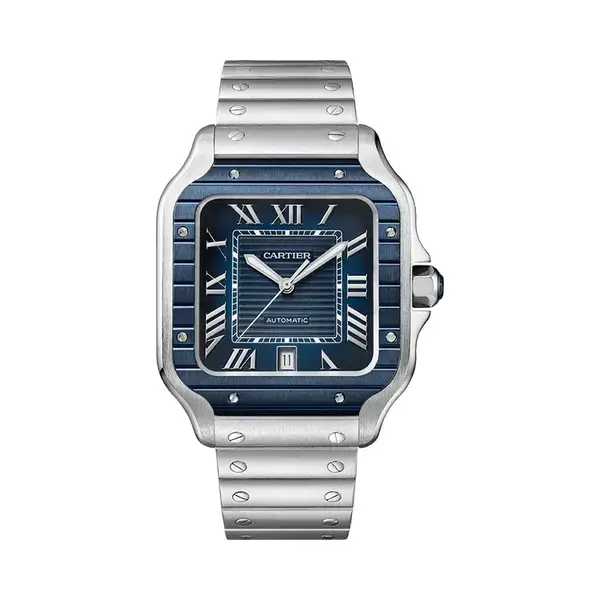AP Iced Out Replica vs. Real: Can You Tell the Difference?

When it comes to high-end luxury watches, few names carry the same weight as Audemars Piguet (AP). Known for their elite craftsmanship, bold design, and prestige, AP timepieces—especially iced out models—are a favorite among celebrities and watch enthusiasts. However, the high cost of owning a real AP has led to a booming market for AP iced out replica watches. The question is: Can you tell the difference between a real and a replica?
In this article, we’ll break down the key comparisons, what to look for, and whether owning a replica is right for you—all while ensuring the content is 100% human-written, SEO-friendly, and highly readable.
What Is an AP Iced Out Watch?
An iced out watch is a luxury timepiece completely covered in diamonds or other gemstones. For Audemars Piguet, this often applies to its iconic Royal Oak and Royal Oak Offshore collections. These watches are not only made with premium materials but are also meticulously crafted with hand-set stones that add immense value and visual appeal.
The real AP iced out watches can cost hundreds of thousands of dollars, while a replica can be found online for a few hundred or thousand dollars, depending on quality.
The Rise of AP Iced Out Replicas
Replicas—also known as homage or copy watches—are made to mimic the look of the real thing. Some are cheap knock-offs, while others are high-quality 1:1 replicas that replicate nearly every visual and functional detail.
People are drawn to AP iced out replicas because:
-
The real versions are too expensive.
-
They want the look without the cost.
-
They view it as a fashion piece, not an investment.
But how close can a replica get to the real thing?
1. Visual Differences: Real vs. Replica
At first glance, a well-made AP iced out replica can look nearly identical to the authentic model. However, trained eyes—and sometimes even curious fans—can pick up subtle differences:
a. Diamonds & Gem Setting
-
Real AP: Uses VVS or flawless diamonds hand-set by master jewelers.
-
Replica: Often uses cubic zirconia or synthetic stones with glue or machine setting.
b. Case Finish and Detail
-
Real AP: Features brushed and polished surfaces with perfect symmetry.
-
Replica: May have uneven polishing, lighter weight, or poorly aligned edges.
c. Dial and Hands
-
Real AP: Dials have sharp fonts, perfect lume, and intricate detailing.
-
Replica: Dials may have thicker fonts, incorrect spacing, or off-color lume.
2. Weight and Build Quality
Luxury watches are made with solid gold, stainless steel, or titanium—materials that give them substantial weight.
-
Real AP iced out watches feel heavy and solid due to premium materials.
-
Replicas tend to feel lighter or unbalanced due to cheaper alloys or hollow links.
If you hold both side by side, the weight can be a quick giveaway.
3. Movement and Functionality
Perhaps the biggest difference is inside the watch.
-
Real AP uses in-house movements with intricate complications, sweeping second hands, and a near-silent rotor.
-
Replica watches, even high-end ones, often use Asian automatic or Miyota movements, which may tick instead of sweep or lack proper chronograph function.
In fact, many replicas include non-functional subdials—a clear sign of inauthenticity.
4. Serial Numbers and Authentication
Real AP watches come with:
-
Unique serial numbers
-
Authenticity cards
-
Certificate of origin
-
Luxury presentation box
Replica watches may also include these—but they are often fake or duplicated. Brands like AP keep track of serials and can verify them through their service centers.
5. Price Tells the Truth
A real iced out AP Royal Oak may cost $100,000–$300,000+ depending on materials, year, and rarity.
If someone offers you one for $500 or even $5,000, chances are it’s a replica.
That’s not to say all replicas are bad—but don’t be misled by clever pricing. If the deal seems too good to be true, it probably is.
6. Durability and Longevity
Real AP watches are made to last generations. They undergo extensive quality testing, including water resistance, shock absorption, and wear resistance.
Replicas may look nice at first but often:
-
Scratch easily
-
Lose stones
-
Stop working after a year or two
-
Cannot be serviced by luxury watch repair shops
7. Wearing a Replica: Legal and Ethical Questions
Owning or wearing a replica watch is not illegal in most countries—unless you’re selling or marketing it as real. However, the ethics are up for debate:
-
Pro: Offers affordable style and luxury look.
-
Con: Supports counterfeit markets and undermines real craftsmanship.
If you’re honest about wearing a replica for style and not deception, most people are fine with it. But trying to pass off a replica as real could damage your credibility—especially among collectors.
8. Should You Buy a Replica or Save for the Real Thing?
It depends on your goals:
-
Fashion-first buyer? A replica might work—just choose a high-quality version.
-
Collector or investor? Only the real deal holds value and prestige.
-
Watch enthusiast? Consider saving for an entry-level AP or buying from pre-owned markets.
Final Thoughts: Can You Tell the Difference?
Yes—if you know what to look for, the difference between a real and replica AP iced out watch becomes clear. While replicas can offer stunning looks, they rarely match the craftsmanship, heritage, or mechanical brilliance of the original.
Whether you go for the real AP or a replica, make an informed choice. Understand the trade-offs and wear what fits your style—and your budget—with confidence.
- Art
- Causes
- Best Offers
- Crafts
- Dance
- Drinks
- Film
- Fitness
- Food
- Jogos
- Festival
- Gardening
- Health
- Início
- Literature
- Music
- Networking
- Outro
- Party
- Religion
- Shopping
- Sports
- Theater
- Wellness



